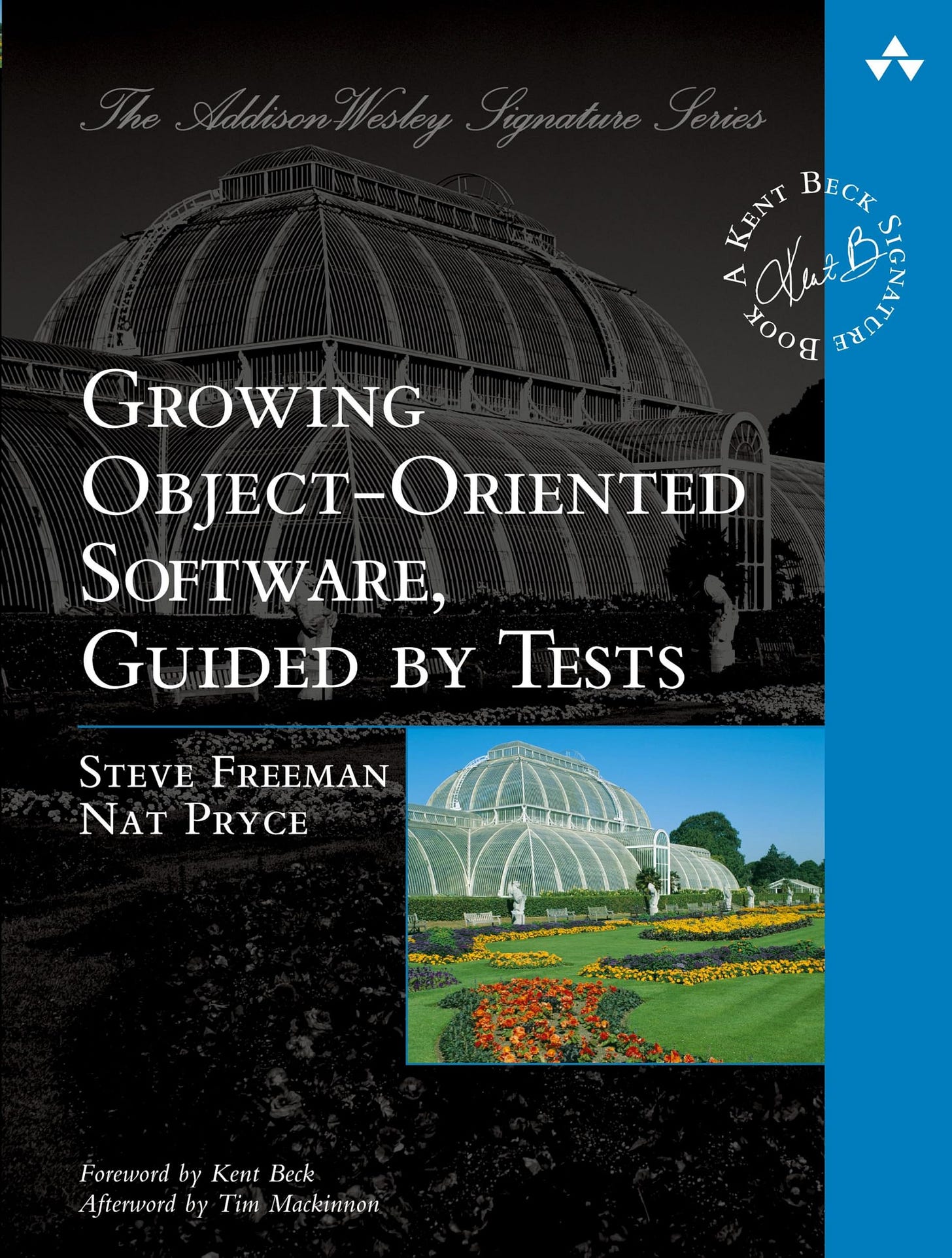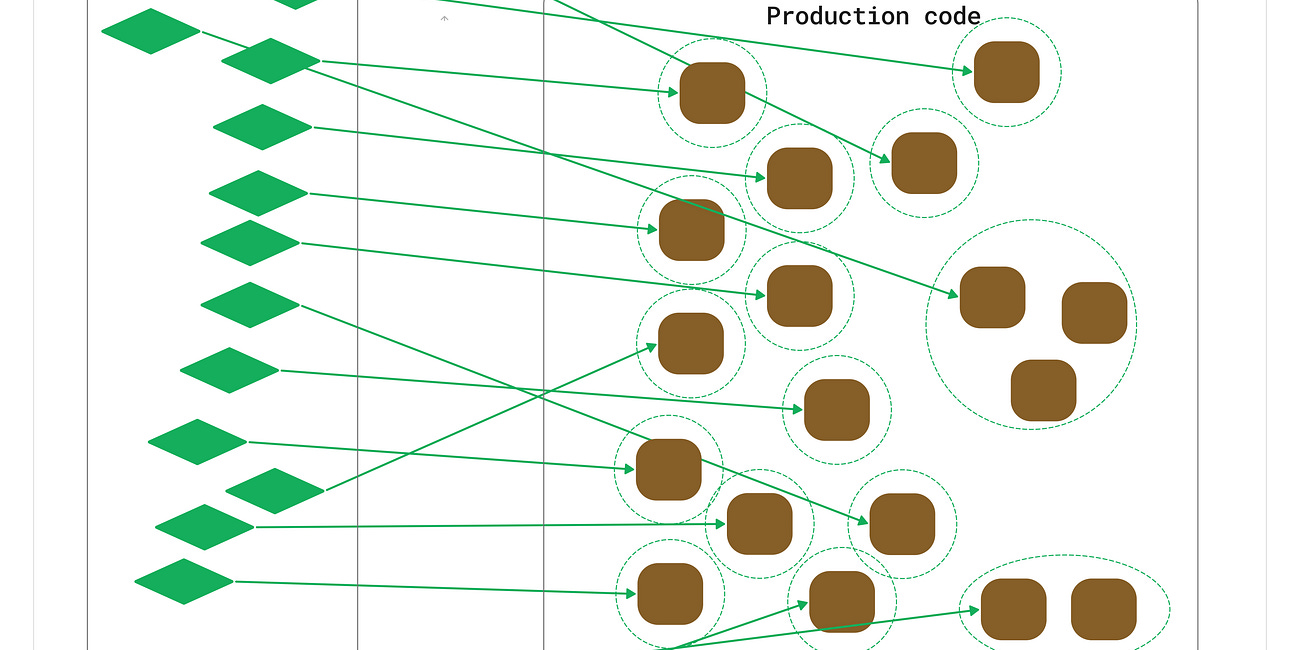In depth view to Peers, Internals collaborators
Introduction
Test-Driven Development (TDD) isn’t just about writing tests first. In Growing Object-Oriented Software, Guided by Tests (GOOS), Steve Freeman and Nat Pryce present a way to grow software incrementally with tests that drive the design. Their approach is grounded in object-oriented design, focusing not only on correctness but on creating collaborative, decoupled systems that are easy to understand, maintain, and evolve.
A central idea in GOOS is: We use test doubles only for the peers of the object under test, never for its internals.
“We grow the system from the outside in, starting with the behaviour we want and discovering the design as we go.”
Understanding what constitutes a "peer" vs an "internal" is critical if you want to write meaningful tests and create systems that are resilient to change. This article delves into these ideas in depth, providing examples, direct quotes from the book, and practical techniques to apply in your code.
What Is a Peer?
A peer is an external collaborator that your object uses to fulfill part of its responsibilities. You communicate with peers via a public interface, and you can substitute them with test doubles to validate the interaction.
Peers are:
Independent objects.
Connected by clear contracts.
Often injected via a constructor or an interface.
Real-world Peer Examples
A
PaymentGatewaythat charges customers.A
Repositorythat stores entities.A
Clockthat provides the current time.A
Mailerthat sends notifications.
What Is an Internal?
An internal is an object or function that exists only to help fulfill the behavior of the object under test. Internals do not participate in cross-object collaboration and should never be replaced with a test double.
Freeman and Pryce emphasize: Mocking an internal implementation detail... couples the test to the structure of the class, rather than its externally visible behavior.
Internals are:
Implementation details.
Often private or encapsulated.
Replaceable through refactoring.
The Rule: Mock Peers, Not Internals
Only replace collaborators with test doubles when those collaborators are peers.
When you mock an internal:
You couple the test with implementation details.
You block refactoring.
You lose confidence in test reliability.
When you mock a peer:
You test real interactions between units.
You focus on collaboration, not internal steps.
Worked Example: Order Processing System
The Domain
data class Order(val productId: String, val quantity: Int, val userId: String)The Peers
interface Inventory {
fun isAvailable(productId: String, quantity: Int): Boolean
fun reserve(productId: String, quantity: Int)
}
interface PaymentGateway {
fun charge(userId: String, amount: Double)
}
interface OrderRepository {
fun save(order: Order)
}The Internal
private class PriceCalculator {
fun totalFor(productId: String, qty: Int): Double = when (productId) {
"book" -> 10.0 * qty
"laptop" -> 800.0 * qty
else -> throw IllegalArgumentException("Unknown product $productId")
}
}The Subject Under Test
class OrderProcessor(
private val inventory: Inventory,
private val paymentGateway: PaymentGateway,
private val orderRepository: OrderRepository,
private val priceCalculator: PriceCalculator
) {
fun process(order: Order): Boolean {
if (!inventory.isAvailable(order.productId, order.quantity)) return false
val total = priceCalculator.calculate(order.productId, order.quantity)
inventory.reserve(order.productId, order.quantity)
paymentGateway.charge(order.userId, total)
orderRepository.save(order)
return true
}
}Final Summary
Use test doubles when needed and design your code, understanding the types of classes you need to create and their corresponding responsibilities.
Related post.
Explaining Unit Tests Solitary/Sociable and Integration Tests Narrow/Broad
Testing terms like unit tests and integration tests and their nuances are often misused or overlap, creating confusion. By clearly defining and understanding their boundaries, we can better align on a testing strategy. This article clarifies these distinctions by focusing on the boundaries of the Subject Under Test (SUT) across different test types.
Thanks to Manuel Rivero and also Codesai for writing about this topic.
Rivero, Manuel. Heuristics to determine unit boundaries: object peer stereotypes, detecting effects and FIRS-ness. https://codesai.com/posts/2025/07/heuristics-to-determine-unit-boundaries.
Rivero, Manuel. "Isolated" test means something very different to different people!. https://codesai.com/posts/2025/06/isolated-test-something-different-to-different-people
Rivero, Manuel. The class is not the unit in the London school style of TDD. https://codesai.com/posts/2025/03/mockist-tdd-unit-not-the-class



